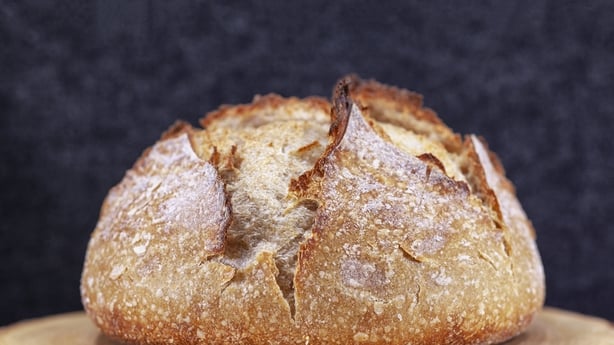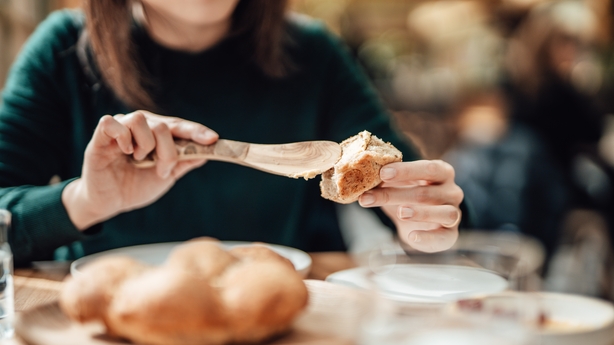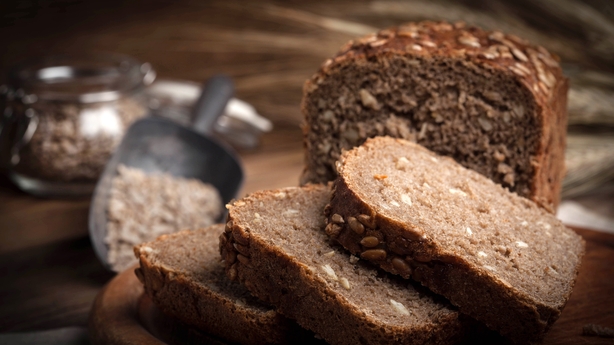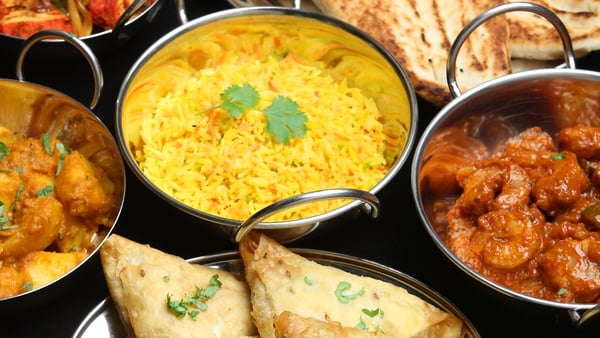Louise Reynolds, Dietician with the Irish Nutrition and Dietetic Institute, spoke to Colm Ó Mongáin about the importance of eating carbs, getting enough fibre and how to make the best choices in the bread aisle. Listen back above.
Even before you get to the bread section in the supermarket, the delicious aroma takes hold and leads you on to a tasty display of crusty baguettes, seed-studded browns and buttery croissants - who can resist?
Turns out you don't have to, at least not every day, so says dietician Louise Reynolds who dropped in for a chat with keen bread-baker Colm Ó Mongáin (sitting in for Claire Byrne).
Louise had some tips for choosing the kinds of breads that maximise health, whilst still allowing a little room for the occasional indulgence.

Louise thinks bread doesn’t deserve its bad reputation. She says that unless you've been told to avoid it by your doctor, there’s no need to pass on your daily crust:
"Where did this come from, this sort of fear of bread? I would definitely be here to say enjoy your bread! Don’t worry, there’s no need to avoid bread in the diet."
That being said, not all breads are created equal. They range from the nuttiest wholemeal and whole grains, to the crusty whites and sourdoughs and the sweeter breads like brioche and banana bread - which Louise says is effectively a cake.
The key thing to look at is fibre content, which is essential to keeping the digestive system working. Louise says that in Ireland, we don’t get enough fibre:
"Bread can be a really good source of fibre, if you go for the right ones. Fibre is something that we all need in the Irish diet. We know that we’re not getting enough fibre. The average Irish person needs about 25g to 30g a day; say on average, we’re hitting about 15g, the research shows."

Packaged breads have information on fibre content on the label, but if there’s no packaging, you can still look for words in the display like 'wholemeal’ or ‘wholegrain’, as these will contain the most fibre.
Louise has scanned the bread offerings in a local supermarket and she says it’s important to know the amount of fibre per slice, in order to work out how much it adds to the daily goal of 25g – 30g of fibre per day:
"Per slice of bread, you might get 1g of fibre per slice in a white sliced pan, but you could go up to, there’s a multi-grain, seeded bread that I picked up. There’s lots of seeds in there, so that’s going to look very different; it’s going to have lots of nutty grains in there that you can see. One of them there that I picked up had about 4g of fibre per slice, so that’s a huge difference."
The Irish love affair with white sliced pan continues, particularly when it comes toasted and buttered, and there’s no need to break the habit entirely, Louise says:
"People will often think of having a cup of tea and toast, you know, if you’re not really feeling very well, a cup of tea and a slice of white bread toasted can be really comforting, and that’s absolutely fine."

Eating carbohydrates is necessary for life, the dietician says, and bread can be a good way to eat carbs:
"Bread is one of our carbohydrate foods. It gives us energy, when we eat bread, whatever type of bread it is; it’s broken down and digested and it gives us carbohydrate, which is the main fuel that our brain uses. So, we need carbs every day."
As well as fibre, another thing to look out for is the amount of added salt; as we don’t normally think of bread as a "salty" food, like crisps or other savoury snacks. Louise says the salt content in some bread may be more than you think:
"If you’re keeping an eye on the salt in your diet, have a look at the salt content."
Making bread at home is a great way to control exactly what goes into it. People with special dietary needs have been making their own for years, Louise says; and now there’s a great range of off-the-shelf breads for people living with coeliac disease, for example.

Gluten is not your enemy, however, if you haven’t been told by a doctor to stay away from it, the dietician says: "There’s no need to avoid gluten, unless you are diagnosed as coeliac, or if you have a diagnosed gluten intolerance."
A super-handy tip which can save time and money, Louise says is to batch bake your loaves, then slice them up and put them in the freezer:
" Bread can freeze really, really well. Whether you want to have, any kind of bread; if you over buy it, or if you make a batch, obviously it’s easier to do a few while you’re there in the kitchen making bread. It freezes really well and you can just take it out when you need it."
Louise answers listeners' questions, talks about fortified bread and the importance of folic acid in the full interview, listen back above.
You can hear more great interviews covering current affairs, culture, sport and lifestyle on The Today with Claire Byrne show page here.






